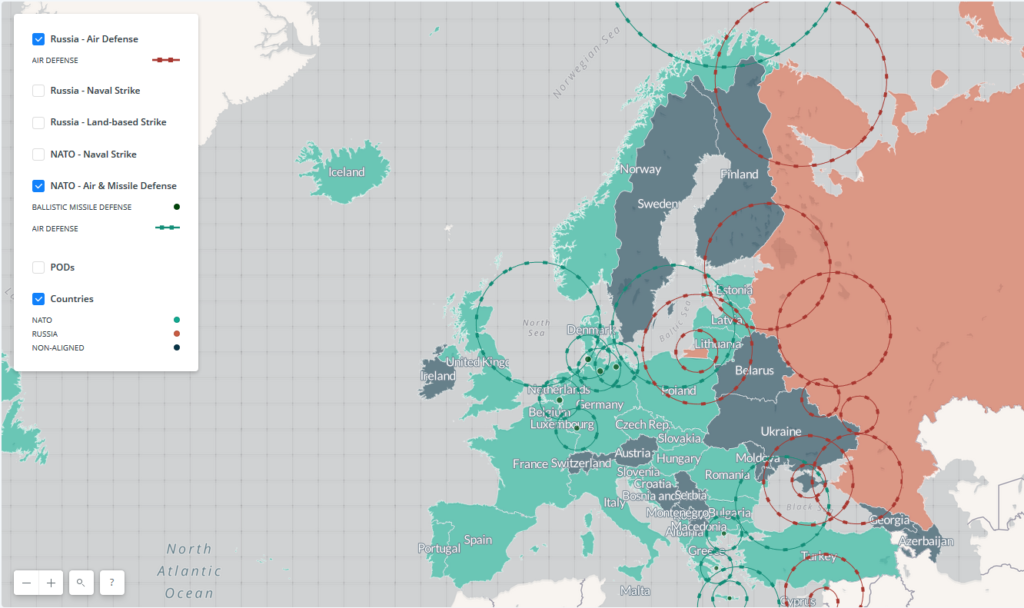
Over, at the Center for Strategic and International Studies (CSIS), Ian Williams, Kathleen Weinberger, and Colonel John O’Grady have assembled data on NATO and Russian anti-access/area denial (known as A2/AD, love it or hate it) capabilities, which has been turned into a fascinating interactive graphic. The capabilities depicted include “air defenses, counter-maritime forces, and theater offensive strike weapons, such as short- or medium-range ballistic missiles, cruise missiles, and other precision guided munitions.”
Information on the map is divided into six categories:
Russia – Air Defense: Includes deployments of long-range Russian anti-air missile systems. Specific systems represented are the S-300 and S-400. Not included in map are Russia’s shorter ranged, highly mobile air defense assets, such as the Buk family of surface to air missile systems. These “shoot and scoot” launchers are embedded with Russian ground forces, and thus do not have fixed locations.
Russia – Land-based Strike: Includes deployments of short-range offensive ballistic missile systems, such as the SS-26 or Iskander short-range ballistic missiles, as well as deployments of Russian Oniks anti-ship missiles to Kaliningrad.
Russia – Naval strike: This category reflects the range (from notional locations) of Russia’s sea-based SS-N-30A Kalibr-type cruise missiles, and its SS-N-27 Sizzler anti-ship missiles.
NATO – Air Defense: Shows the estimated coverage areas and home-base disposition of NATO PATRIOT missile units, separately showing ballistic missile and air defense coverage areas. Although not reflected in this map, NATO is heavily reliant on fighter aircraft for air defense.
NATO – Naval Strike: Reflects the estimated range of U.S. Tomahawk Block IV (TLAM-E) sea-based cruise missiles.
NATO – Ports of Debarkation/Embarkations (PODs): These points show key logistical infrastructure, such as airports and seaports (APODs / SPODs), that could be used by NATO forces.
Figuring out how to fight effectively in this environment is what is keeping American and Western national security thinkers and planners up at night these days. The Third Offset Strategy was the first crack at doing so. Whether it will survive into the incoming Trump administration remains to be seen, though some signs indicate that it will. Stay tuned, folks.
